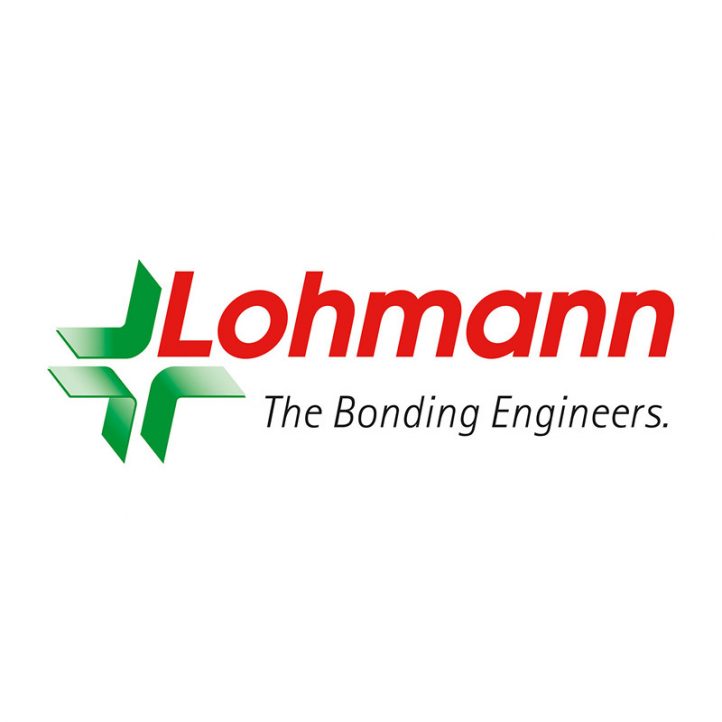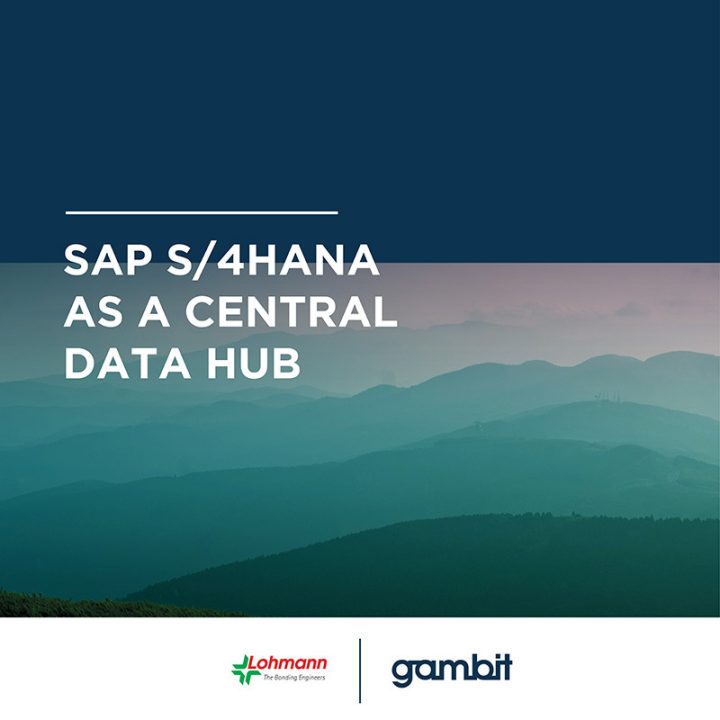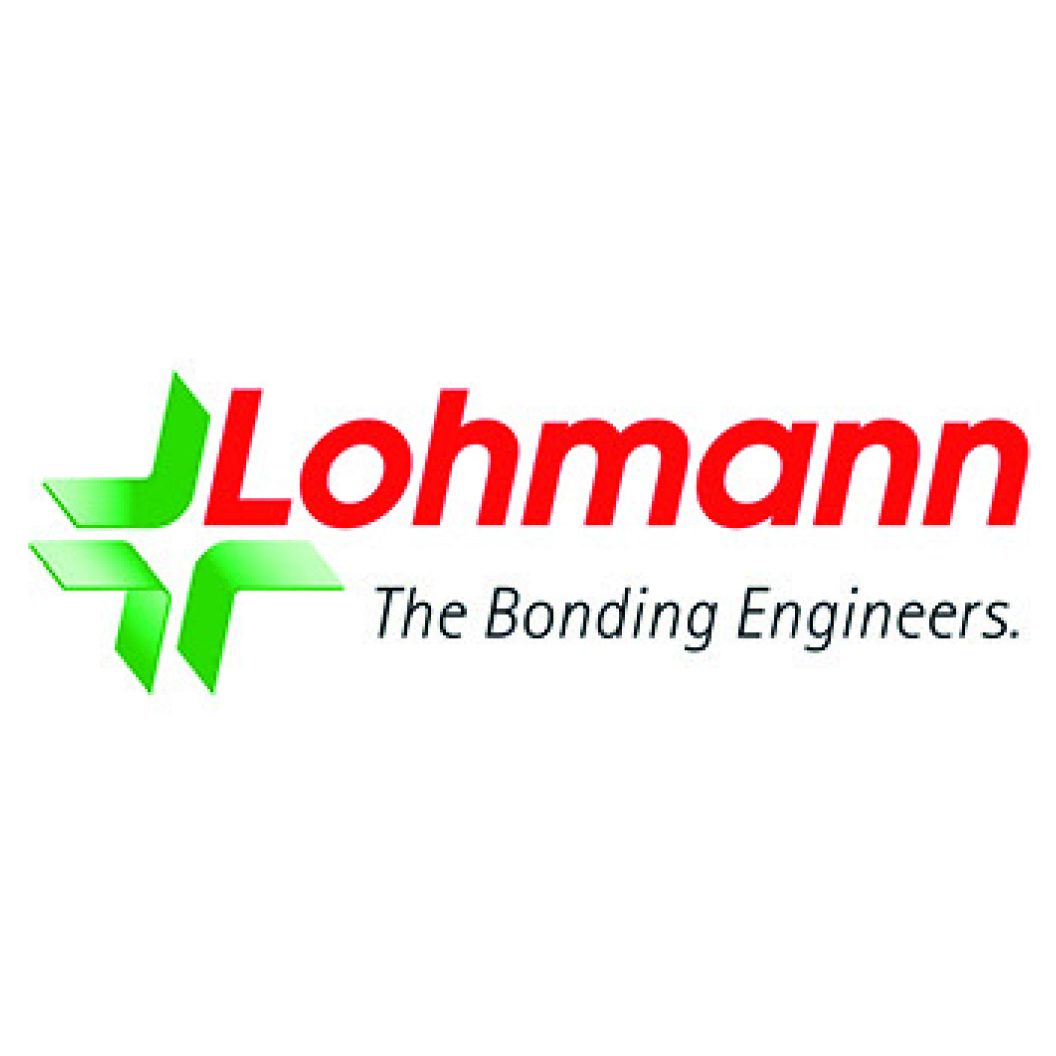SAP S/4HANA cloud as central data hub
The S/4HANA implementation at Lohmann GmbH & Co KG, which uses S/4 as a central data hub for successful ERP consolidation and thus benefits directly, was more than just an ERP implementation.

The S/4HANA implementation at Lohmann GmbH & Co KG, which uses S/4 as a central data hub for successful ERP consolidation and thus benefits directly, was more than just an ERP implementation.
Fast justification of the investment
A long-running rollout project was out of the question for the manufacturer Lohmann during the modernization of its process and IT landscape. Fast, technical benefits were required – the kind that immediately justify the investments instead of only paying off many years after the last rollout step.
“Success factors included our formal approach, initial standardization and documentation of our processes, early data harmonization, and a smart two-layered architecture that you would probably not expect to see in a medium-sized company. These give us added flexibility and speed during rollout,” says Holger Wüsthoff, CIO at Lohmann.
Having set up a Group-wide harmonized process model, the company implemented an SAP S/4HANA solution – one hundred percent standard and with a greenfield approach – in a private cloud. S/4HANA acts as a data hub that is supplied by various legacy systems from different manufacturers and with different versions.
The benefits are immediate. Management receives real-time management and control data via S/4HANA, Fiori apps, dashboards, and all the other advantages of the S/4HANA solution. In addition, many intercompany processes are to be automated, which makes things much easier for divisionally organized companies in particular. The SAP architecture and the selected project approach can be transferred to other migration scenarios.
Lohmann now plans to gradually migrate all legacy systems to S/4HANA in regional clusters. The solution will be further developed so that it remains 100 percent cloud-compatible and can move to the public cloud at the appropriate time.

Download
Reference customer presentation "Lohmann"
Transformation project required for a variety of reasons
Lohmann GmbH & Co. KG, a global manufacturer of technical adhesive solutions and hygiene products, has – like many other successful enterprises – experienced strong growth (partly inorganic) over many years. This usually results in a heterogeneous, highly fragmented IT landscape. At Lohmann, there were eleven different ERP manufacturers alone, with the additional complication of different versions and releases.
As some of the systems were approaching the end of their maintenance contracts, Holger Wüsthoff wondered whether he should continue to invest in the legacy systems or in a new, harmonized and forward-looking landscape in the long term. Against the backdrop of other strategic corporate goals such as digitalization, process acceleration, and automation as well as the need to provide management-relevant information across company boundaries in a timely manner (and thus also across IT system boundaries), the decision was easy.
Lohmann opted for SAP S/4HANA, which prevailed over a market competitor in the evaluation. An earlier rollout attempt with this system had made its technical limitations clear. SAP systems had not been in operation at Lohmann until then.

"The proposed S/4HANA data hub equalizes migration, automates intercompany processes and also provides immediate business benefits."
Quick benefits instead of long rollout
The IT modernization at Lohmann was intended to make a value contribution quickly. Accordingly, an architecture and process model was developed together with the SAP partner GAMBIT Consulting. A waterfall model and a classic rollout template were rejected because quick benefits were required.
Holger Wüsthoff, CIO, summarizes the complex project in a few words: “GAMBIT’s creative project approach made an important contribution to a fast ROI: The proposed S/4HANA data hub streamlines migration, automates intercompany processes, and also provides immediate technical benefits, because we can determine management and control data from all legacy systems company-wide in almost real time and process it with the latest user experience.”
“In retrospect, important success factors included the willingness of Lohmann’s business units to use the SAP standard, the great project support from Lohmann management, and an agile process model that allows rapid commissioning,” says Thomas Pasquale, Managing Director at GAMBIT Consulting and head of the project team.
Process harmonization in the business units
A prerequisite for rapid IT implementation was the harmonization of the process landscape in the Lohmann business units – taking feasibility in the standard S/4HANA system into account.
GAMBIT’s “core shell model” was used, which, for example, permits special local or physical features without jeopardizing harmonization efforts. The following is an example of a deviation from the standard: At some locations, it is not possible to comply with the company’s standard process “No storage of unchecked incoming goods” due to space restrictions.
Exceptions must be allowed and implemented in cases such as these. “If you don’t know your processes, you will sooner or later fail with such measures,” warns Holger Wüsthoff. “As a rule, however, only large companies have a consistent process layout,” he notes with surprise.

"The great project support from Lohmann's management and an agile process model that allowed for a speedy startup were crucial."
SAP Architecture: Layer Model
When designing the future architecture, the ability to achieve rapid success and benefits despite a heterogeneous and poorly standardized IT landscape had to be considered. GAMBIT therefore designed a two-layer model:
Layer 1 contains all local ERP systems and their hub solutions.
Layer 2 contains all central applications, for example, for creating global sales reports or global availability checks across legal entities and IT systems.
Layer 2 essentially consists of a private cloud S/4HANA system that is used with a broad and deep range of functions (FI/CO (financials), embedded BW (for real-time reporting), SD (sales), PP (production planning), MM (material management with inventory management), QM (quality management), and eEWM (embedded EWM for warehouse management)). PP-DS (detailed planning), TM (transportation management), and SAP Cloud Platform are also to be used in the future.
“We were already starting with some challenging and demanding modules for an S/4HANA implementation,” smiles Holger Wüsthoff, looking back over the project. S/4HANA is currently used in the standard system without any modifications.
Any adjustments that may become necessary are to be made in future with the SAP Cloud Platform in order to remain cloud-compatible. “We strictly prohibit developments that take away our cloud capability because we want to move to the public cloud as soon as possible,” stresses Holger Wüsthoff. Some SCM functionalities required for this are not yet available in S/4HANA; otherwise, the company would have gone straight to the public cloud.
SAP Analytics Cloud is used for comprehensive analyses. SAP Solution Manager 7.2 is used for lifecycle and test management with the S/4HANA solution.
Data harmonization and semantic integration
In a classical rollout, conversion rules would not be defined until it was turn of the system to be converted. In this case, data harmonization was the preferred approach so that the heterogeneous systems with their respective semantics could communicate with each other.
Material master data, product master data, and customer master data were mapped, converted, and assigned in great detail, for example, including features, product classifications, material groups, or product hierarchies.
“We have deliberately opted for data harmonization, which means that our entire company already speaks the same language today when it comes to data. In the legacy systems, work can continue without changes and we enjoy complete transparency at customer and product level,” says Holger Wüsthoff, explaining the advantages of this approach.
Data reconciliation between the systems takes place unnoticed by the user in the background. Through semantic integration, global evaluations are already possible, although legacy systems are still used locally.
Implementation according to "SAP Activate" procedure model
In preparation for the implementation, Lohmann documented all workflows in the BPMN standard and thus created a process model for the entire group of companies, independently of systems.
The platform (layer 2) that has to supply all local systems (layer 1) with the harmonized data was developed first. In layer 1, interfaces for supplying data to the platform were implemented; in the first converted national company, an S/4HANA greenfield implementation was carried out.
The future rollout will then be limited to performing another S/4HANA greenfield implementation and inactivating the interfaces to this legacy system that are no longer required. The S/4HANA configurations are carried out using “SAP Activate”, a guided implementation procedure that includes SAP best practices and minimizes implementation risks while helping organizations to learn and apply the new processes.
SAP Solution Manager plays an important role: The BPMN process model can be modeled as executable here. “The best-practice sets supplied by SAP are suitable for configuring entire company areas automatically. SAP Solution Manager has become a really good and useful tool for process management,” says Holger Wüsthoff. SolMan is also used for automated test management when, for example, regression testing or release upgrades are pending.
An agile project approach was used throughout the project in order to work closely with the departments responsible.
Many advantages: Process acceleration, automation and transparency
The updated IT solution offers numerous advantages from the very first day of productive use:
- Digitalization: SAP S/4HANA already works with a cloud-based Microsoft CRM system. The new architecture now enables much easier integration of additional on-premise solutions or cloud services from SAP or other providers for digital end-to-end processes.
- Process acceleration and automation: The consistent mapping of standardized end-to-end processes in an integrated system optimizes throughput times and creates new automation options when expanding the solution.
- “Central point of truth”: The central database is S/4HANA. Now, for the first time, cross-company data analyses and visualizations are possible, for example, to globally evaluate sales in regions, with customers, or for selected products, or to carry out global availability checks – in real time or at least very quickly.
This information is extremely important for the management of the divisional control and management model of the Lohmann matrix organization. In the matrix organization, legal entities lose their meaning when they are organized divisionally – an overarching perspective and transparency are needed.
The S/4HANA user experience, for example, with Fiori apps on mobile devices and graphical evaluation elements, makes the information easier to grasp and understand.

"I would do it again. Gambit, as our "Enterprise Architect," has created a solution that is forward-looking for years to come."
Transferability of the solution architecture to other migrations
“The solution architecture we developed together can be transferred to many other companies that are planning a smooth S/4HANA migration. Whether the local systems to be converted are by SAP or another manufacturer is irrelevant. The advantage of our process model is that there is no unnecessary pressure to convert systems in one go. This can be done, for example, at the end of maintenance contracts or very quickly in situations where S/4HANA offers particular advantages,” explains Thomas Pasquale.
“I would do the same again. As our “enterprise architect”, GAMBIT has created a forward-looking solution for the coming years: All data is already stored in the S/4HANA target structure and our process layout – as another important foundation – is firmly anchored in it. In this way, we quickly gain global transparency and will be able to grow into the public cloud soon. The use of a multi-tier structure, which was previously unusual in medium-sized enterprises, gives us flexibility and speed advantages for rollout and expansion,” adds Holger Wüsthoff.
The bottom line
A sophisticated solution architecture with SAP S/4HANA as the central data hub, which provides new possibilities for heterogenous systems; a determination to use the SAP solution as standard; and an agile best-practice process model that allows rapid commissioning are important building blocks that contribute to the success of a challenging project. “For an IT project of this complexity, the time frame was extremely tight.
The project started in May 2018, the platform (layer 2) went live at the end of November, and the first system migration took place in November. With S/4HANA, we have achieved a very high degree of flexibility that enables us to react swiftly to possible market requirements – and these will come quickly as digitalization continues,” says Holger Wüsthoff confidently.

